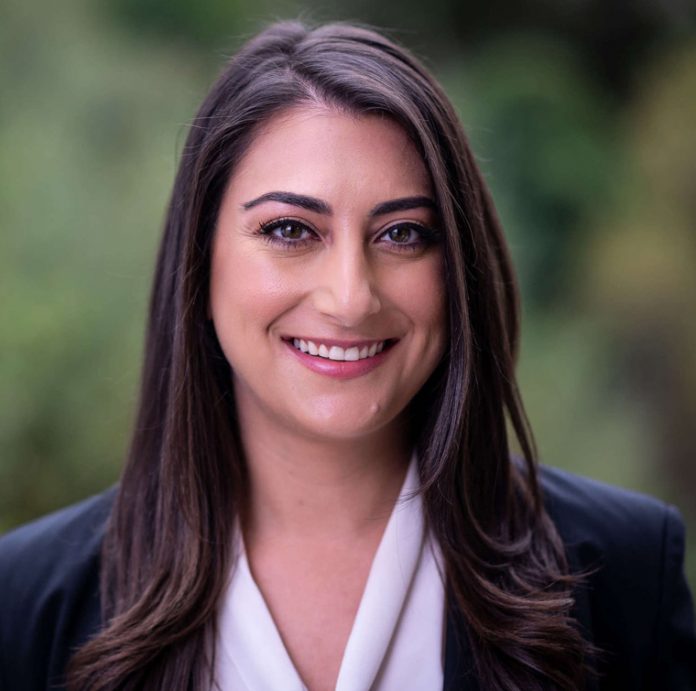Congresswoman Sara Jacobs and Senator Alex Padilla held a virtual town hall meeting on Feb. 24 to discuss and answer questions about how the region will benefit from the Infrastructure Investment and Jobs Act and the importance of making childcare more affordable.
Jacobs said the two big issues that come up in hearing from constituents are the region’s crumbling infrastructure and the childcare crises.
She said the good news was that the bipartisan infrastructure was passed in November 2021, providing $550 billion in new funds to repair highways and bridges, expand reliable internet access, help communities recover from the devastating impacts of climate change, includes the largest investment ever for improving public transit, clean water, and passenger rails, and will create more than two million jobs nationwide.
“We will be able to see and build a positive impact of this bill right here in San Diego,” she said. “As many of you know the bipartisan infrastructure law was only half of the agenda. The other half included one of my top priorities, childcare, and while we passed the Build Better Act in November, it is stalled in the Senate. But that does not mean that the work is over…I am still fighting. I know Senator Padilla is still fighting.”
Padilla said thanks to the law, it is the largest infrastructure investment seen in nearly a century. He said the bill provides more than $55 billion for California to improve roads, reduce traffic, improve air quality. He said California has already received more than $300 million to improve its airports.
“That includes a $24 million line item specifically for San Diego International Airport,” he said. “We are an international city. We are going to see some tremendous progress and modernizations there. We have secured more than $8 billion to fund water infrastructures throughout the west and we know how in all of California how tough the drought has been in recent years. This funding will go in funding drought resiliency, water recycling programs.”
Padilla said San Diego has been a pioneers and innovators in water reclamation, but that the funds will also be used to restore critical ecosystems. He said that more than $30 million in federal funds to reduce erosion, improve safety of area beaches was announced in January. Padilla said all of this is great news, but there is still much more to be done.
“I want to advocate for modernization of the electrical grid, clean transportation technology, wildfire mitigation and prevention. But it is just the beginning,” he said. “As a parent, I do understand the need for the investment in childcare, not just for quality of life, but for our economy. It is really tough for people to go back to work when they do not have a safe place to leave our kids while we are doing so.”
Padilla said it was more than paying for babysitting, but revolutionizing childcare as early education opportunities and getting children ready to thrive when they enter kindergarten and elementary school.
A question on how the money for infrastructure will benefit the San Diego region, Padilla said the international airport, over the next five years will see a total of $788 million for transit, $121 million total for the airport. He said Mid-Coast Corridor Transit Project is expanding, and there is an $8 million increase for the Capital Investment Grants Program which went to the project.
“Including transportation and public transit is a win-win,” he said. “Improving transportation, reducing commute time while making it better for the environment.”
Jacobs said that the Save Streets for all, a federal program, will provide $6 billion in grant funding for local governments to reduce crashes and fatalities, and that there will also be funding for wildfires, and $100 million allocated for broadband coverage.
“We have seen how failure to invest in our electrical grids, which can spark wildfires and the damage that it causes,” said Padilla. “Damages to communities, loss of properties, loss of lives. So, in the infrastructure investment there is $5 billion for federal land management agencies, specifically $3.4 billion for wildfire risk reduction projects. We are better stewards of those public lands, federal and state. We can prevent fires. We can mitigate wildfires so when we do have them, save lives, save property, and be better environmental stewards.”
Jacobs said Congressman Juan Vargas and she met with the Black American Political Association to discuss how funds can be appropriated to the communities that need it the most, instead of going to the more affluent communities.
“People are right to be skeptical because we know that prior infrastructure packages have not always been great on this issue,” she said. “Here in San Diego, we have examples of that. Across the country, highways were built right through Black neighborhoods and hundreds of thousands of people were displaced from 1957 to 1977. We know that these disparities are real. We know that they have been exasperated by federal investment. We see it in everything…There is actually specific provisions in this bill to address injustices of the past.”
Jacobs said it includes $1 billion to reconnect those communities and $21 billion for cleaning up abandoned oil wells, hazardous waste sites, and that it is “grounded in the spirit of equity… It is important that our communities get our fair share.”
In a question about childcare, Padilla said that he understands how critical this problem is and he is optimistic about solutions to the problem.
“Build Back Better is temporarily sidelined for now, but it is going to be back,” he said. “So many elements of the package are critical and urgently needed. I just do not know if it will be a package by some other name, a package of two bills or three bills. That is still to be determined as we continue to negotiate. But even some of my Republican colleagues are coming forward with their proposals. That is evidence that negotiations are active and that there is bipartisan support for this.”
Padilla said a key piece of a childcare legislation is how to pay for it.
“For any family, for any working family, we know that reliable, accessible, affordable childcare is just as important to them as that internet connection and a safe way to get to and from work,” he said. “We are not giving up on childcare. It was important before the pandemic and even more so since the pandemic.”
Jacobs said she is optimistic as well, and as much that is heard on the news about gridlock, there is a lot of bipartisanships working behind the headlines, and there are definite areas where they can work together.
In responding to a question that childcare givers are underpaid, and if given hire wages, would childcare costs increase, Jacobs said that is the “heart of the problem.”
“Childcare is incredibly expensive and childcare providers are often making poverty wages,” she said. “The high costs come from many places. Some are administrative, how much it cost to operate a childcare center, license fees, the physical space, providers must do continuing education and certification, and there are strict guidelines on how many providers are needed for child an infant. We think these regulations are important and we want high-quality childcare, and we want places where children are safe. It is fundamentally a market that does not work without helping it.”














